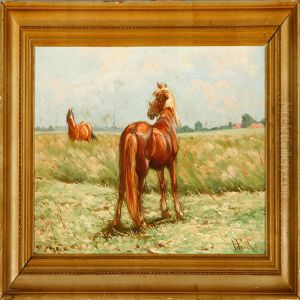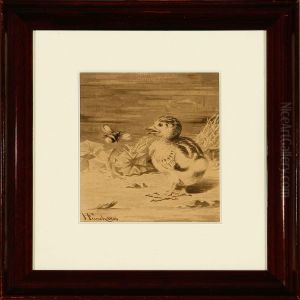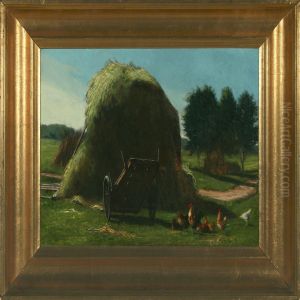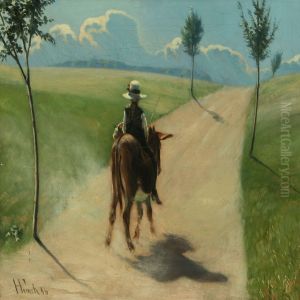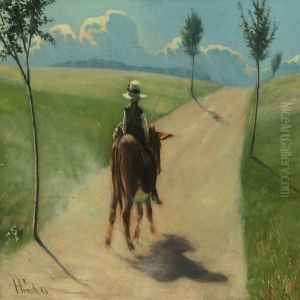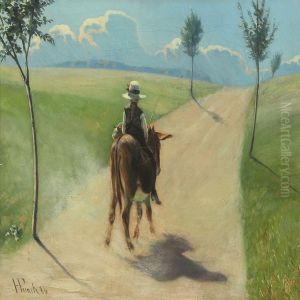Herman Frederik Funch Paintings
Herman Frederik Funch was a Danish artist, born in 1866 and passing away in 1929. His career spanned a period in art history where there was a significant shift from traditional academic art to more modernist expressions. Despite not being widely recognized internationally, Funch made considerable contributions to the Danish art scene, particularly in painting and illustration.
Funch's early life was characterized by traditional artistic education. He studied at the Royal Danish Academy of Fine Arts, an institution renowned for fostering the talents of many prominent Danish artists. During his time at the academy, Funch was deeply influenced by the prevailing academic art practices but was also exposed to the burgeoning movements of Impressionism and Post-Impressionism, which began to infiltrate the Danish art scene towards the end of the 19th century.
Throughout his career, Funch developed a style that, while rooted in the academic tradition, increasingly incorporated elements of the emerging modernist tendencies. His works often depicted landscapes, urban scenes, and occasionally, portraits. Funch had a particular affinity for capturing the interplay of light and shadow, a hallmark of Impressionist influence, yet his compositions remained grounded in a more structured, realist approach.
While Herman Frederik Funch may not have achieved the same level of fame as some of his contemporaries, his work provides a valuable insight into the transitional period of Danish art. His paintings reflect the gradual shift in aesthetic values and techniques from the 19th to the early 20th century. Funch's contributions, though perhaps understated, are an integral part of Denmark's rich artistic heritage, bridging the gap between traditional and modernist expressions.
Funch's legacy is preserved in various Danish museums and galleries, where his works continue to be studied and appreciated for their historical significance and artistic merit. Though he died in 1929, his art remains a testament to the dynamic and evolving landscape of Danish art during his lifetime.
